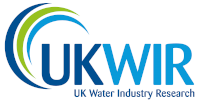Transforming sewerage management
Sewage pollution in UK & Irish surface waters is one of the most high-profile environmental issues faced by the industry.
Storm overflows are designed to prevent sewage backflows into homes and premises and avoid overloading the sewerage network and sewage treatment works. While historically seen as a pragmatic solution, they are increasingly discharging more frequently and for extended periods, even outside heavy rainfall events.
The challenge
Factors like population growth, ageing infrastructure and extreme weather exacerbate the issue. Blockages, operational failures, and groundwater infiltration are further contributing to spills.
The Environment Act introduced at the end of 2021 places further duties and responsibilities on companies, regulators and government to reduce storm overflows in England. Defra's 2022 Storm Overflow Discharge Reduction Plan and Ofwat's 30% pollution reduction target by 2025 underscore this commitment.
Significant investment, innovation and action will be required from the water sector. Understanding which options should be employed and the associated costs, will help the industry achieve its aims.
Protecting rivers and seas
The impact of sewage and stormwater discharge, agricultural runoff and urban pollution on river ecosystems is a key area of research for UKWIR.
Dr Nick Mills is Programme Lead on Big Question 6: How do we achieve a sustainable and resilient sewerage and drainage service for communities and the environment by 2050? He is also the Director of Environment and Innovation at Southern Water.
Mills says, "A collaborative, data-driven approach is crucial to restoring and maintaining river health. By identifying and addressing threats, we can ensure accountability and empower solutions.
“Storm overflows, a legacy issue, can be phased out through a combination of nature-based, sustainable drainage, and data-driven engineering. This requires a joint effort from water companies, councils, property owners and the public."
The Treatment Options for Storm Overflows project aligns with UKWIR's 3rd Research Theme – Protecting and enhancing natural systems - by identifying and implementing effective strategies for managing storm overflows.
It provides a comprehensive assessment of storm water treatment options, their feasibility, and potential policy implications and identifies necessary regulatory changes across the UK and Ireland.
What we did
- Literature review and horizon scan: To identify commercially available treatment options
- Cost-benefit analysis: Undertaken against regulatory requirements in various regions
- Cost model development: Created a tool to assess suitability, cost and carbon impact of different solutions
- Policy implications and regulatory change identification: Analysed findings to determine necessary adjustments
What we discovered
Storm overflow treatment technologies vary in function and suitability.
Debris removal through screens or hydrodynamic separators is often viable but limited by factors like power availability, site footprint and access.
Biological treatment of storm overflows, including deployment of nature-based solutions, is affected by intermittent flow and water quality variations.
Key recommendations
Cost of treatment varies widely depending on the technology chosen. Given the estimated £350-600 billion cost of complete stormwater separation in England alone, it is crucial to compare treatment costs with other options.
Prioritising upstream measures like sustainable drainage (SuDS) and treatment works upgrades can be more cost-effective than large-scale infrastructure projects for separation, storage and treatment.
Next steps
To effectively address storm overflow treatment, we recommend:
- Stakeholder engagement: To discuss research findings and promote a holistic approach to stormwater management
- Regulatory clarity: To define the relationship between reducing spill numbers and implementing treatment
- Pilot trials: To assess the effectiveness of treatment options under various flow conditions and intermittencies
- Innovation: Encourage low-power solutions for solids, organic matter and disinfection removal.
Isle led the project in collaboration with UKWIR. Key project leads were Karyn Georges, Isle; Ken Shapland, UKWIR; Claire Green, Yorkshire Water, and Paul Tipper, United Utilities.
